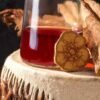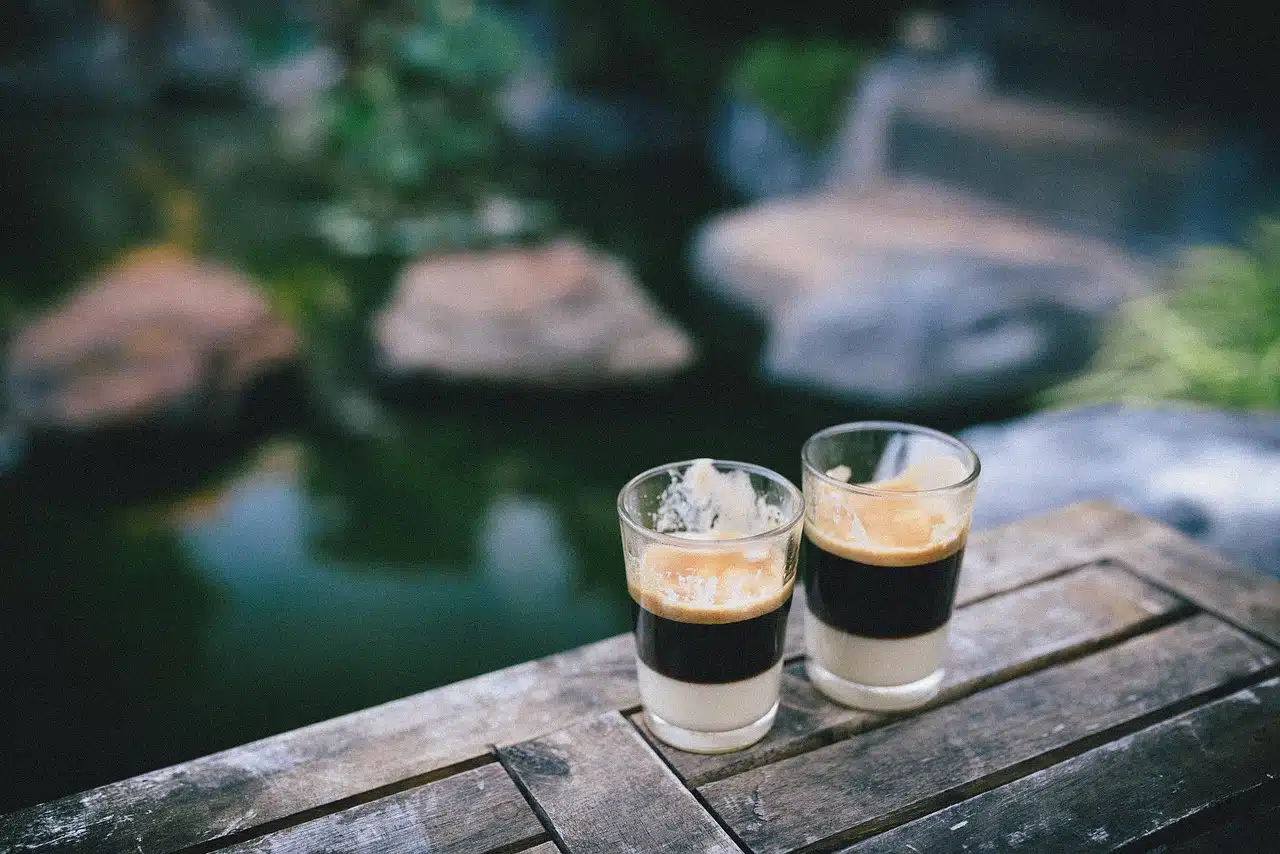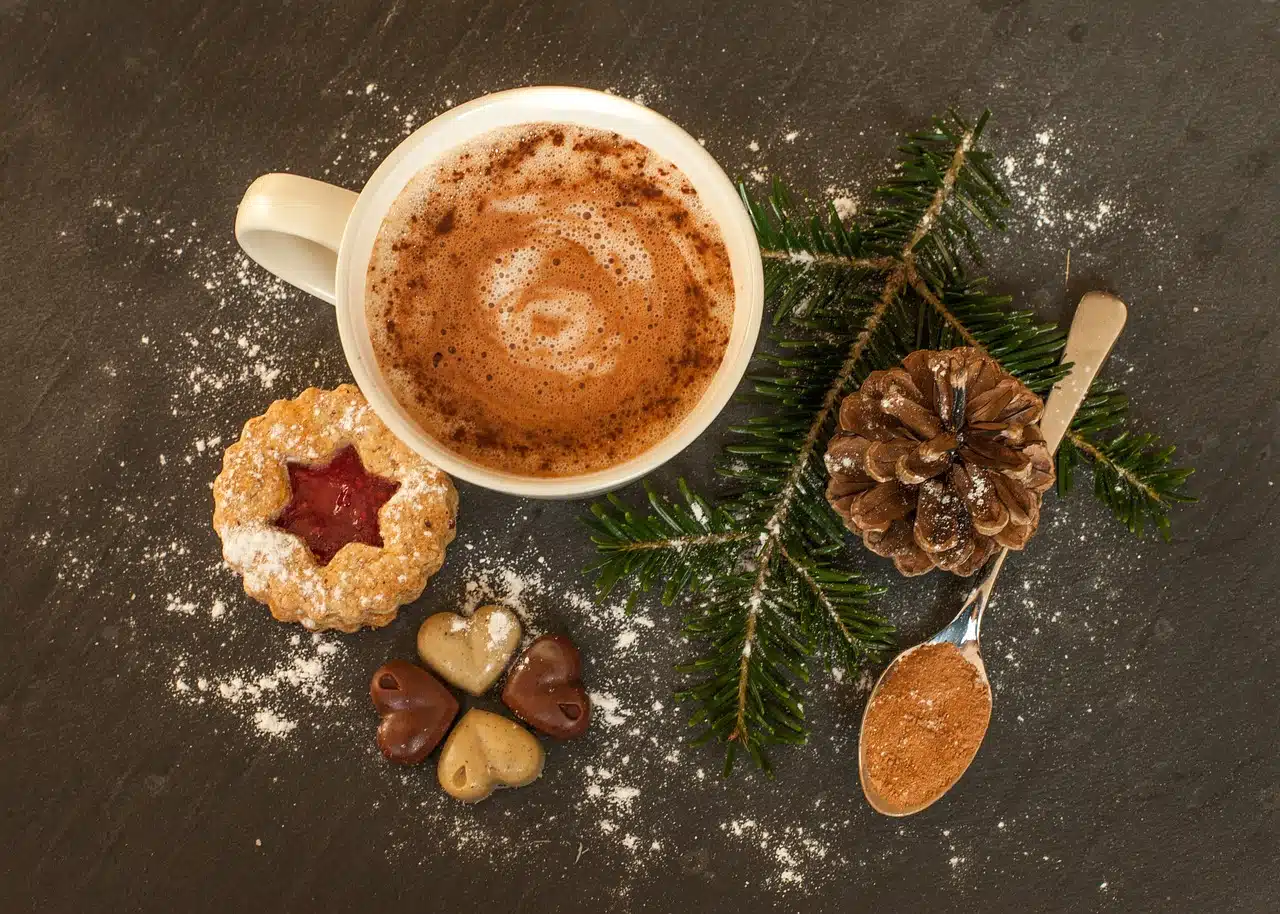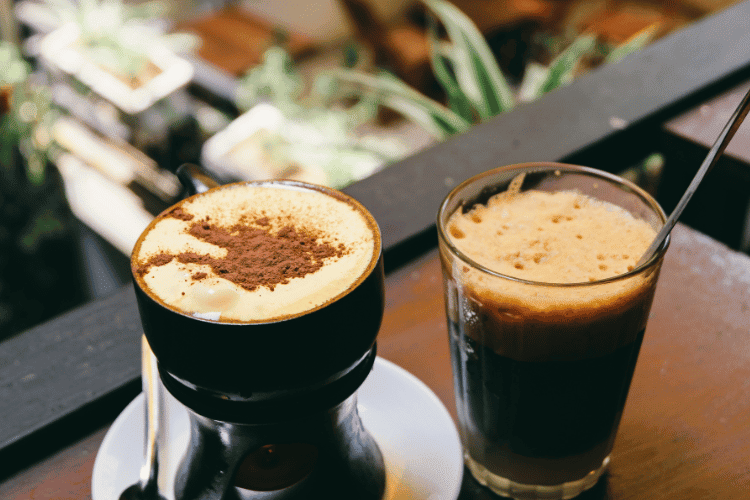Very few people I know can start their day without caffeine. It perks us up and gets us ready to face the day with more clarity and focus. Plus, you have to admit, it tastes pretty delicious too.
Now, many people are looking for ways to take their caffeine fix to a new level by drinking a wider range of caffeine-rich drinks, like lattes, cappuccinos, or espresso.
This brings us to today’s question: how much caffeine is in two shots of espresso? Is it more than a regular cup of coffee?
The quick answer is that espresso contains about 150 mg of caffeine. And, yes, that’s more caffeine than your average cup of Joe.
So, does that make espresso good or bad for you? Keep reading to find out.
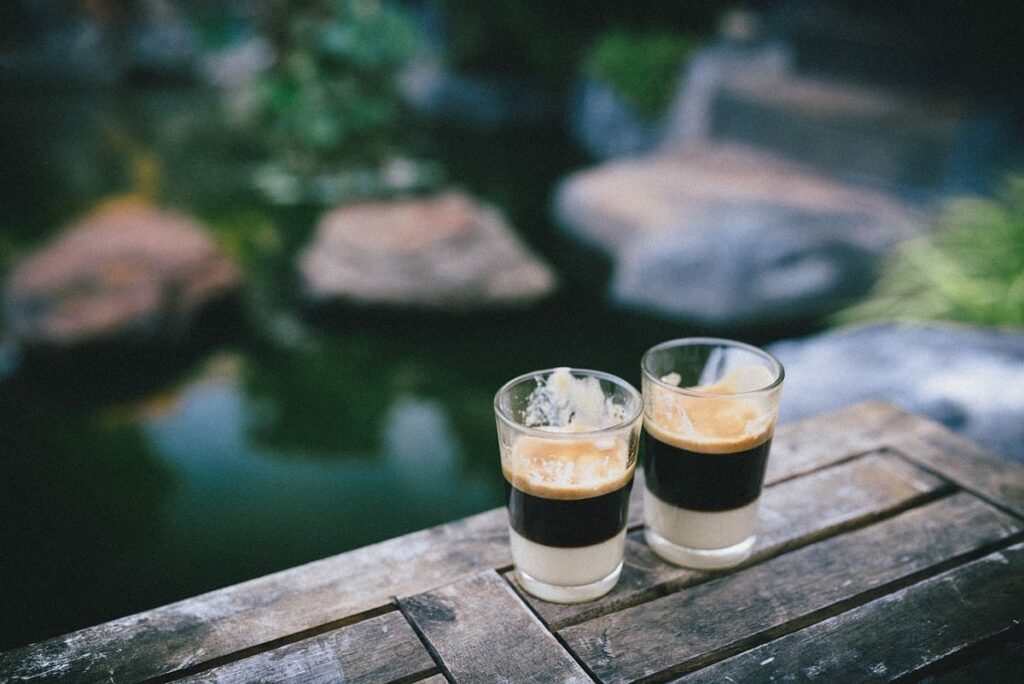
How Much Caffeine Is in Two Shots of Espresso?
A double shot, or a ‘doppio’ as Starbucks calls it, contains between 150 mg and 180 mg of caffeine. It’s made using 14 grams of a blend of dark-roasted coffee beans, which produce around 60 ml of dark, rich coffee.
On the other hand, a single shot of espresso is known as a ‘solo’ in Italian. It’s a single serving made with seven grams of coffee beans and produces about 30 ml of coffee or one fluid ounce.
What’s in a Name?
Let’s look at the meaning behind these words.
Espresso
The word ‘espresso’ doesn’t refer to a certain type of roast or coffee bean. It actually refers to how this type of coffee drink is made.
Espresso first appeared in Italy at the start of the 20th century. Even though coffee had been a staple of Italian life for centuries, this type of coffee was something completely different.
Thanks to two men, Luigi Bezzera and Desiderio Pavoni, who had spent years tweaking their old coffee-making machine. They wanted to invent a machine that could produce a delicious cup of luscious coffee in under one minute, which is exactly what they did in 1903 with their newer model.
To differentiate this new type of coffee from the traditional one, they named it after the new fast, pressurized machine: cafe espresso.
In Italian, espresso is loosely translated as ‘press out.’ The pressure of the hot water as it’s forced through the fine coffee grounds of dark-roasted Arabica and Robusta coffee beans is what gives it its name.
It can also mean ‘express’ or fast. This is in reference to the short time it takes to make espresso, which is usually anywhere between 30–60 seconds.
It’s made on the spot at the customer’s request as opposed to the regular type of coffee brewed in a pot, which typically takes around 3–4 minutes longer.
Another point worth mentioning is that you can drink espresso on its own or with a shot of milk to reduce the bitterness. It’s also often used as the rich, intense base for other drinks like latte, macchiato, mocha, americano, and cappuccino just to name a few.
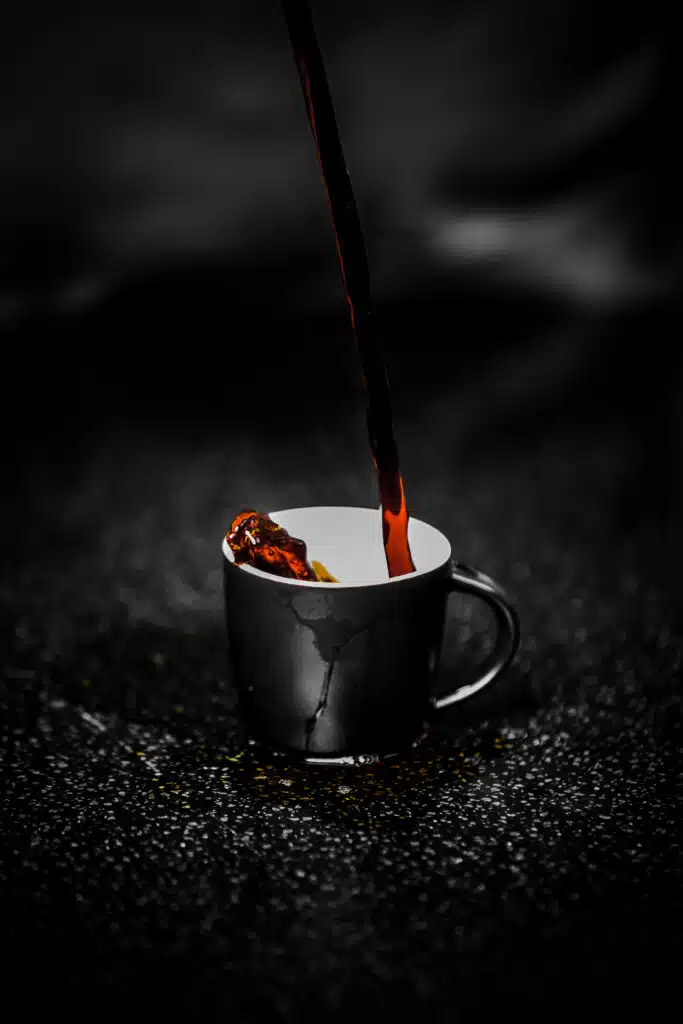
Shot
Just because it’s called a shot doesn’t mean you’re supposed to drown it down in a single gulp.
Just the opposite, in fact. Espresso is meant to be sipped leisurely so you can enjoy its rich, intense flavor.
The ‘shot’ part simply refers to the size of the cup it’s to be served in. You may not know this, but espresso shots are supposed to be served in cups specially made for this flavorful drink.
Known as demitasse cups, they’re around one fluid ounce each for a single shot.
Demitasse is French for a ‘half cup’ because they’re half the size of a regular cup of coffee. This is the small white cup with the delicate handle you’ve seen dozens of times in coffee shops.
These cups hold about 1–3 fluid ounces or 60–90 ml.
How Much Caffeine Is Too Much?
As mentioned above, two shots of espresso contain about 180 mg of caffeine. Compared to the 80 milligrams in an 8-ounce cup of coffee, that’s a lot of caffeine!
According to the Food and Drug Administration (FDA), 400 milligrams of caffeine per day is the maximum limit—that’s about six espresso shots. This means that a double shot of espresso is nearly half the amount of caffeine we can safely consume per day.
Here’s something to consider: you might be surprised to know that most coffee shops serve a double shot as the default order when you order an espresso. So, that’s something to keep in mind the next time you order an espresso.
For example, a double shot of espresso at McCafe contains around 142 mg of caffeine. In contrast, the same serving cup of doppio at Dunkin’ has only 97 mg.
Costa’s double espresso has about 185 mg, whereas getting a double shot of espresso at Caribou means you’re consuming nearly 270 mg of caffeine!
That said, there are several variables that can affect the amount of caffeine in your drink, such as the following:
- The roast level
- The type of coffee beans used
- Whether it’s a blend of beans or one single type
- Grind size
- The length of the shot of espresso
- The type of coffee beverage you’re consuming
- The beverage size
- If there’s any milk, cream, or sugar added
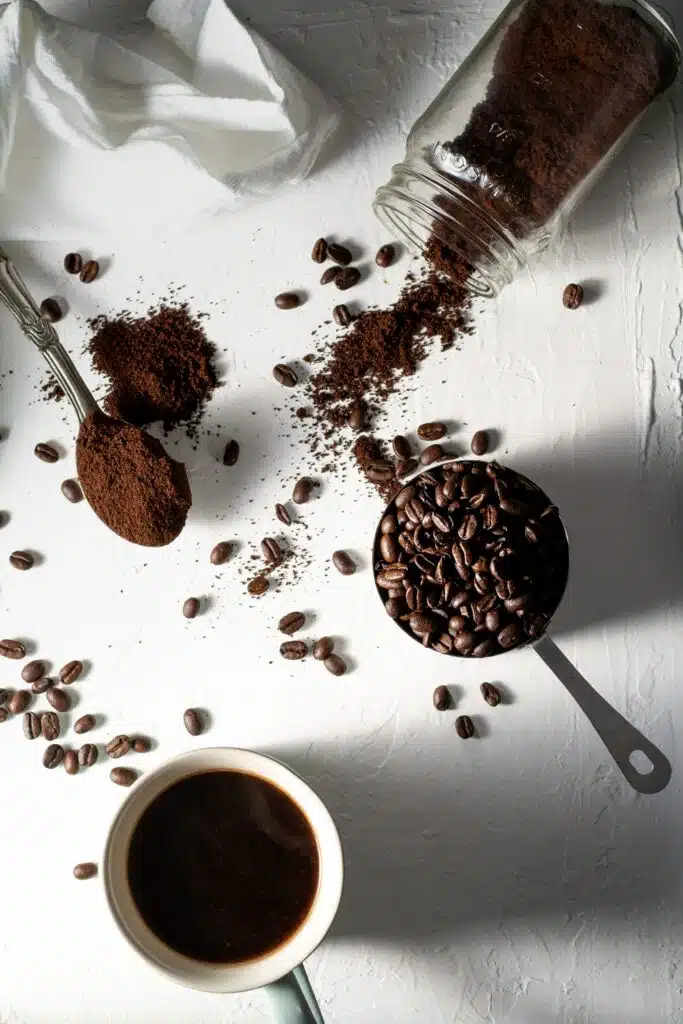
Caffeine Pros and Cons
Caffeine is a natural stimulant found in tea leaves, cocoa beans, and, of course, coffee beans. It works by blocking our brain’s neurotransmitter called adenosine, which is responsible for making us feel drowsy and sleepy.
So, when adenosine is no longer being released in our system, we become more alert and awake. Caffeine also stimulates the release of a feel-good hormone known as dopamine. This chemical is responsible for making us feel more focused, energized, and generally in a better mood.
So, as you can see, caffeine has several health benefits. Yet, too much of anything can be harmful, including good-old caffeine.
Here’s a quick look at some of the benefits and health risks of beverages rich in caffeine like espresso.
Benefits
The first great thing about caffeine is its ability to give us a boost of energy, wake us up, and make us feel alert. It also helps us stay focused, boost our concentration, and enhance our productivity throughout the day.
Take a look at a few other health benefits of consuming moderate amounts of caffeine:
- It helps the brain retain information and boots long-term memory
- It contains high levels of antioxidants that help ease inflammation, reduce the risk of chronic diseases and even some types of cancer
- Stimulates the release of adrenaline, which works to increase strength, speed, and overall performance
- It is low in calories and is often used to help reduce weight
- It may help lower the risk of Type-2 diabetes
- It has been linked to a reduction in depression, mood disorders, anxiety disorders, and other mental health conditions
- It is a diuretic which increases urine production to help rid your body of excess sodium and water
Drawbacks
Drinking more than four double shots of espresso daily can make you jittery and anxious rather than focused and alert. The reason is that one of its short-term side effects is that it increases heart rate and blood pressure.
Plus, if you drink it later in the day, it can make it harder for you to fall asleep, which can lead to insomnia. Remember that the average half-life of the caffeine in a double shot of espresso is about five hours.
Say you drink a double shot late in the afternoon, say around 5 pm. This means that the caffeine will still be in your system well past 10 pm. So, you’ll likely be up half the night. Then, in the second half, you’ll be jittery from caffeine withdrawal, and you’ll still be unable to sleep.
Another thing few people consider is that drinking any type of caffeine-rich drink, especially one as intense as espresso, isn’t safe to drink on an empty stomach. The acidity of the beverage can irritate your digestive tract and make you feel queasy and nauseous.
Here’s a list of people who should avoid consuming more than a couple of double shots during their day:
- Pregnant and nursing mothers
- People with epilepsy
- People with irregular heartbeats, also known as arrhythmias
- Children and teenagers
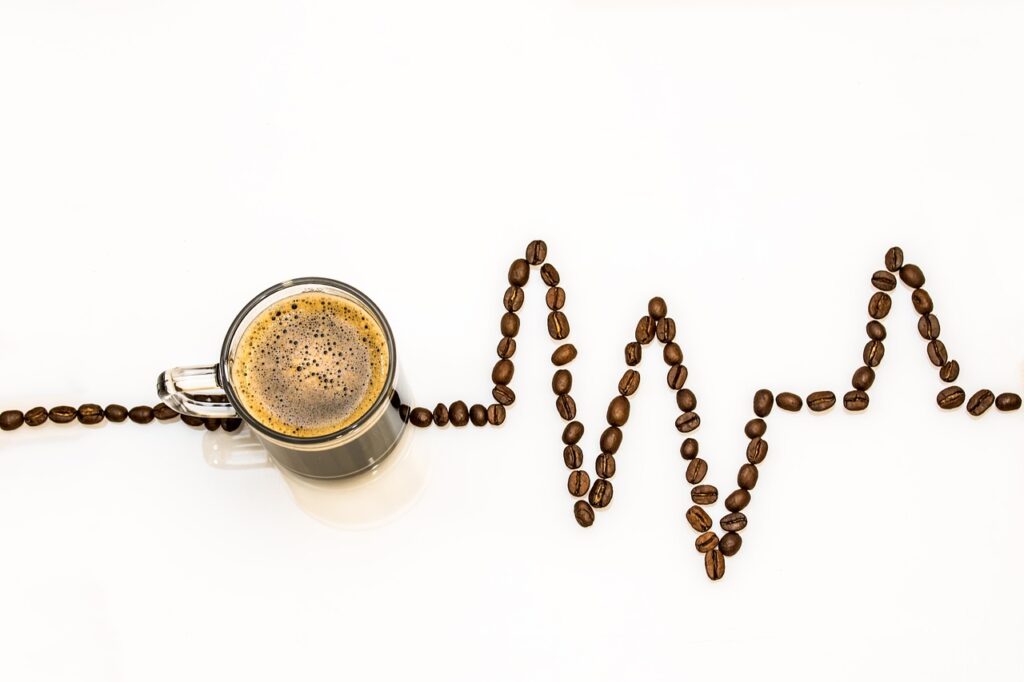
The Bottom Line
So, how much caffeine is in two shots of espresso? About half the recommended daily amount, or around 180 mg. So, you can safely enjoy up to four shots per day without going overboard. Just make sure they’re at least four hours apart to enjoy their benefits fully.
Still, you have to be aware that there are variables that can affect the level of caffeine in espresso. These variables include things like the quality of the coffee beans, the type of grind used to make it, and how the beans were roasted.
If the intense, bold flavor of espresso is too much for you, you can always add one or two shots to a couple of ounces of steamed milk to make a latte. Or, you can add a final layer of foam for a velvety cup of delicious cappuccino.



